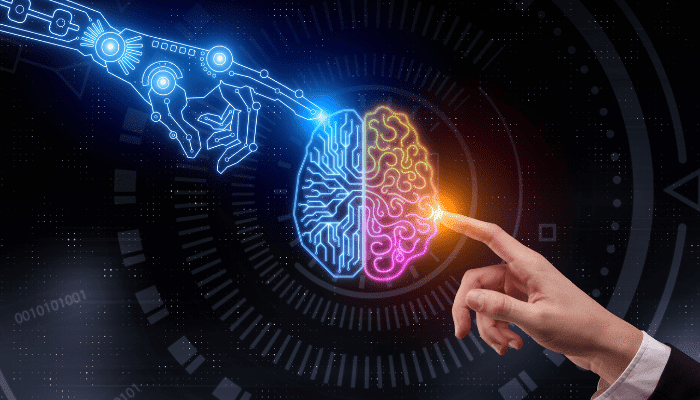Gamification in HR is a transformative concept encapsulating the integration of interactive elements into processes that traditionally lack game-like features.
Whether it’s websites, employee portals, or on-location procedures, infusing game-style elements enhances engagement and effectiveness, defining the essence of gamification in HR.
The many ways companies can integrate gamification into different processes within each sector dwarf the scale of different industries. Gamification is a growing trend at the corporate level. Companies such as Starbucks, Nike, and Amazon use gamification at varying levels of their industry.
Most often, gamification is seen as customer-centric in loyalty apps, rewards programs, promotional opportunities, and, yes, even games. However, gamification offers a great deal of promise to businesses’ internal matters, including HR duties and tasks.
How Can Gamification in HR Transform the Workplace?
There is no limit to interactivity when it comes to gamification in HR processes and duties. Game elements can modify nearly any task, process, or procedure to offer a sense of progression and entertainment to make it more engaging. Gamification provides some significant benefits.
Immersive experiences can foster strong relationships between potential employees, new hires, and existing employees. HR gamification also has the benefit of refreshing existing processes, making them more motivational. Over a third of studies of gamification’s effects revolve around motivation – quite the hot topic.
1. Enhancing Productivity Without Burnout
We all know that pushing for productivity too hard can backfire. It leads to burnout, disengagement, and ultimately, higher turnover. The magic of gamification lies in making everyday tasks feel more rewarding. By tying milestones and achievements to incentives, employees feel a sense of progress similar to the levels of a video game.
For example, assigning badges for meeting certain milestones in a process or project can incentivize employees passively. However, if the badges are tied to rewards or promotions, then the desire to meet those metrics only intensifies.
In another example, one compliance process from Google regarding business expenses underwent a gamification overall, resulting in 100% compliance from employees.
2. Compliance Made Engaging
Let’s be honest, no one enjoys the monotonous task of compliance. Yet, it’s essential for the smooth operation of your business. What if you could turn those mundane reviews into interactive, engaging experiences? By introducing game-like elements—like quizzes with rewards—you turn passive compliance into active participation.
Research shows that gamification is 75% psychology and 25% technology. It taps into the natural human desire for competition and reward.
A simple daily compliance raffle, for example, where employees earn entries by answering policy-related questions correctly, could drastically improve engagement with compliance processes.
3. Engagement
Passive elements of competition tied to output and milestones are a great way to include HR gamification in the work environment. It depends on the industry, but if employee success has a statistical element, it makes sense to use those stats to create competition and generate rewards.
For example, sales quotas for retailers can be measured individually or on a team level. If the team hits a certain quarterly sales amount, the team is awarded a perk.
One survey by the Society for Human Resource Management (SHRM) discovered that “retention/turnover was the top workforce management challenge cited by 47% of HR professionals.” The value of gamification as a tool to reduce turnover is quite apparent.
4. Training
Training programs can be a tough sell, especially when employees view them as time-consuming or irrelevant. Gamification transforms training from a static process into an engaging experience.
But what are some ways Companies can use HR gamification for training tasks?
- Simulating everyday tasks and processes can provide opportunities for training innovation, especially if the simulation has gamified elements such as scoring.
- Training periods often involve large groups of staff, all training around roughly the same period. If a scoring system is in place, a quarterly leaderboard and prize could be a great way to motivate your employees regarding training.
5. Onboarding
Onboarding is often the first real touchpoint new employees have with your organization. If it feels like a drag, you risk losing top talent before they’ve even settled in. Gamifying the onboarding process adds an element of excitement and motivation.
Making the onboarding process is a particularly loaded task for HR representatives, but gamification is critical to streamlining the process for the employer and employees.
- Leveling systems, such as points and badges, can provide a fun way to motivate a new hire. These systems use gamification to indicate progress, which helps make the process more fun.
- Games that introduce processes and job tasks are an excellent way for HR to use gamification to encourage new hires to be more involved with their onboarding process.
6. Recruitment
Recruitment can be one of the toughest challenges for businesses at all levels, especially service businesses. Despite open positions in many companies, finding the best and brightest can be difficult, especially when factoring in workplace culture and expectations.
However, HR gamification can be helpful here, too. How might gamification draw in potential employees?
- Creating simple games to draw talent and give them a sense of the duties associated with a job is effective. For example, memory-based sorting games are effective for packing and shipping jobs.
- Quizzes and trivia to build and test applicants’ knowledge can also be a strong option for gamification of recruitment. Perhaps general knowledge quizzes result in setting them down a career path they had yet to intend.
- Points systems, such as professional referrals, can also add a game element to recruitment. Professional leads and references can be ranked accordingly and be part of the application process.
Gamification: The Future of HR?
Just as gamification has become a hot topic for customer relations, gamification offers an equal potential to reshape the relationship between businesses and their employees.
The possibility of creating motivation for rote or standard tasks in any business setting is invaluable, giving employees a refreshing reason to engage with their jobs beyond the paycheck.
How might your business’ HR process best leverage the interactive elements of gamification? There are many options, and further research is worth your time in discovering how to elevate the rewarding interactivity between your employees and their workflow.
Frequently Asked Questions
Q1. What is gamification in hr?
Gamification in HR involves integrating game elements, such as rewards, challenges, and interactive features, into various human resources processes. It applies to the workplace by enhancing engagement, motivation, and overall performance of employees through game-like experiences in training, recruitment, and employee development.
Q2. What benefits does the growing trend of gamification bring to HR processes?
The growing trend of gamification in HR brings several benefits, including increased employee engagement, enhanced learning and development outcomes, improved recruitment processes, and a more positive and collaborative workplace culture. Gamification also contributes to data-driven insights into employee performance and preferences.
Q3. Are there specific HR areas where gamification is most effective?
Gamification is particularly effective in areas such as employee training and development, onboarding processes, performance management, and talent recruitment. These areas benefit from the motivational and interactive aspects of gamification, fostering a more engaging and effective HR experience.




